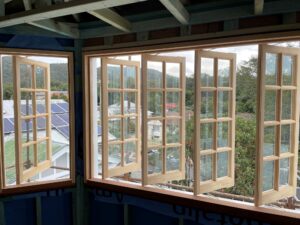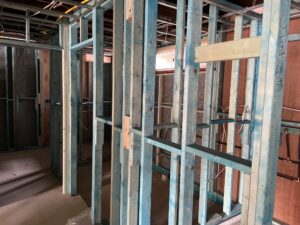My husband and I are currently renovating – yes I know, like half of Brisbane.
It’s a big deal for us. Although I grew up in a house that was being renovated constantly – through a mixture of professional tradies and my very handy parents, I have never been personally responsible for major renovations.
Our builder complimented me recently by saying that I was remarkably calm. I am not usually described as calm when embarking on something new. It occurred to me that the reason why I have been able to cope with the uncertainties of construction in the current climate is that there are a lot of similarities between construction and litigation.
The similarities do not begin and end with the sheer number of WorkCover and Public Liability claims that occur on construction sites. Our builders laugh at me for wincing every time they walk down a ladder – honestly if you had seen what I had seen, you would understand!

More importantly, it is the process of construction that reminds me of the process of litigation. If you have ever been involved in the construction process and you need to pursue litigation for any reason, understanding the parallels can help you to get the best out of your lawyer and cause yourself minimal anxiety during litigation.
These are the parallels I have observed:-
- Proper planning is paramount – We would be lost without our architect. I would not even know where to begin in planning a construction project. Similarly, it is impossible to plan properly for litigation without an experienced litigator thinking several steps ahead.
- Communication is vital – This may seem obvious but, what is less obvious, is who you need to communicate with. I have made the mistake of asking questions of our architect that are better suited to the construction manager and then asking of the construction manager questions which should be asked of the building business manager. Luckily, everyone has been very patient in directing me to who can help me. I know they are not being difficult, merely trying to make sure that I get the right answer. I am reminded of clients who ask their doctors for legal advice and their lawyers for medical advice. Unfortunately, I have known doctors who are all too happy to dispense legal advice so I fear that there may also be lawyers out there who are giving medical advice. A wise professional knows their limits – I will do what I can to help my clients and steer them in the right direction but I cannot prepare your tax return nor recommend the best painkillers.
- Recommendations v Decisions – As the clients, we need to make the final choices on finishes and design. However, we have engaged experienced construction professionals to advise us on the best options. Our builders have advised us against certain options, in some cases, they have strongly advised us against them knowing that the cost is more likely to escalate or they do not believe the final product will be what we are expecting. Similarly, we advise our clients of their prospects and our recommendations taking into account those prospects. Once we have given that advice, it is for the client to decide what they want to do. If the client’s decision is likely to lead to an outcome with which they are unhappy, we may strongly advise them against it but it is still the client’s decision.
- Expect the Unexpected – No amount of planning or communication could have foreshadowed the amount of rock that needed moving during our earthworks. Similarly, no amount of investigations undertaken by your lawyer can determine the questions you will be asked under cross examination. You need to be prepared for a level of uncertainty if you take your claim to trial.
- Value – Value is not in the dollar cost of a service. Value is the cost of the problem minus the cost of the solution. The cheapest renovations are the ones you do not do. That is until the house begins to rot from neglect, becomes much more expensive to fix and the value of the property plummets. Similarly, the cheapest litigation is the one you do not pursue. Until you realise how much time you have lost from work due to an injury which can no longer be recovered if the claim is out of time. Legal fees often pale into insignificance by comparison to even relatively short periods of lost income.
- Expertise – There are so many different experts working on and around a building site. I can see why clients who work in the building industry make such awesome clients – they recognise all of the different expertise that goes into construction. Similarly with litigation, we often need to rely upon medical evidence, the evidence of colleagues or employers about job opportunities, the evidence of engineers and ergonomists about the cause of injuries and, in some cases, the assistance of forensic accountants in the quantification of claims. Our job as lawyers is to collate all necessary evidence to maximise your claim in the same way as the role of a builder is to coordinate different trades on site efficiently and cost effectively to ensure that the building process runs smoothly.

6. Trust – None of it works without trust. We trust our architect and builder and, if they had acted in any way other than with honesty and integrity, we would have taken our business elsewhere. Similarly, litigation cannot work without clients trusting their lawyers. Our builders were very open to us obtaining legal advice about their building contract just as we encourage our clients to seek independent legal advice about our Client Agreement. Transparency at the beginning is the best way of ensuring trust throughout the project.
Our building work is not finished yet and we are bound to have a few more twists and turns in the process. However, I am confident that open communication between everyone will ensure that we will get there in the end – hopefully in time for us to have the family over for Christmas:)


![Medical Records and Claims for Personal Injuries – Maher v Russell [2022] ACTSC 297](https://karelawyers.com.au/wp-content/uploads/2023/02/files.jpg)



